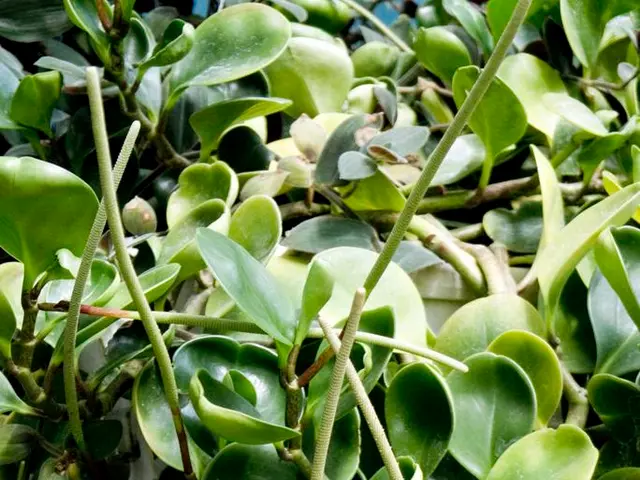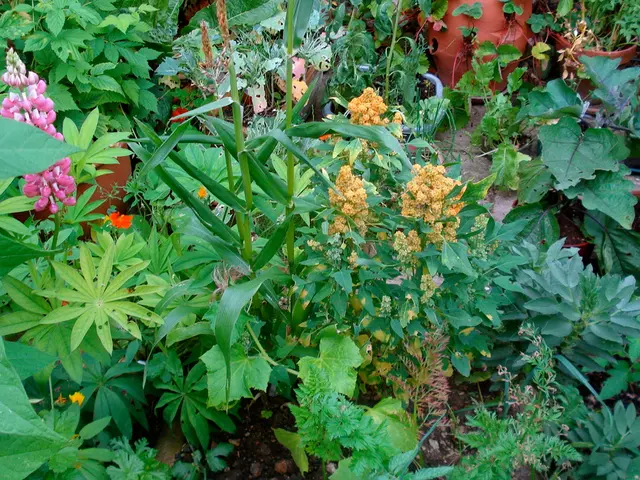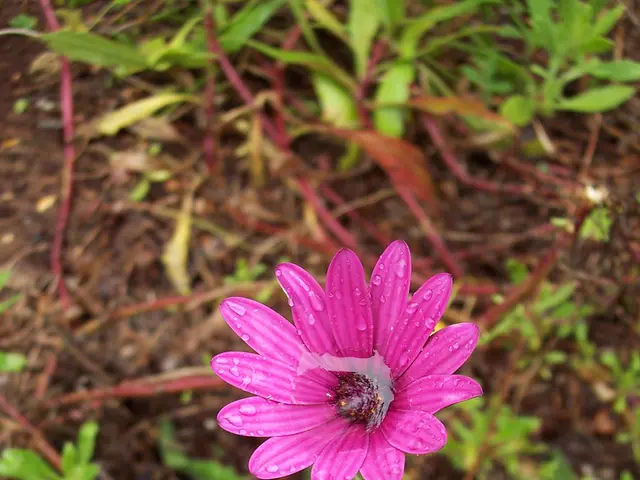Top Crops for Cost-Effective Home Cultivation in 2022
Saving Big on Your Garden: Top Crops for Budget-Conscious Gardeners
Ever thought about growing a garden to slash your grocery bills? Say goodbye to the supermarket chain's grip on your wallet and take control of your groceries with these budget-friendly garden choices. Here's a list of top picks to help you get more "bang for your buck" without breaking the bank on garden essentials.
First off, a little background: I embarked on my gardening journey over a decade ago when I swapped my corporate job for being a stay-at-home mom. My main motivator? Cutting back on our skyrocketing grocery expense. By focusing on crops that save me the most money, I managed to avoid the sharp increase in food costs that others experienced.
So, as you go through my recommended list, remember: grow what your family eats and enjoys! Here are some can't-miss crops for gardeners - especially those with space constraints.
Herbs
Herbs can be a game-changer when it comes to saving money. Both fresh and dried herbs can be costly at the store, especially fresh ones when you consider the high price for a small amount. Growing these herbs in your garden can yield a significant amount of produce, giving you a great advantage. What's more, herbs require less space compared to vegetables and fruits, making them ideal for small gardens and container gardening.
Many herbs are perennial, meaning that you plant them once and enjoy a continuous harvest for years to come. (Learn more about perennial kitchen herbs here.)
Here are the top herbs for your garden:
- Basil
- Dill
- Cilantro
- Rosemary
- Thyme
- Sage
- Oregano
- Marjoram
- Mint
- Chives
(Learn more about preserving herbs for your kitchen here.)
Lettuce and Salad Greens
Love salads? Growing your own lettuce and salad greens is an excellent choice for both beginners and budget-conscious gardeners. Seeds for these crops are reasonably priced, and most packets contain hundreds of seeds, making them a cost-effective option compared to store-bought salad blends. Plus, they don't require a lot of space and are ideal for container gardening.
Bell Peppers
Bell peppers can be pricey, especially when you opt for organic options. Bell peppers are often listed among the "Dirty Dozen" by the Environmental Working Group, meaning they are among the produce items with the highest residues of pesticides. So, by growing your own bell peppers, you can save money while reducing your family's exposure to harmful chemicals. One bell pepper plant yields around 5-10 peppers on average, but this depends on the variety and growing conditions.
Mini Sweet Peppers
Mini sweet peppers are smaller, more expensive, and more flavorful than their counterparts, bell peppers. Growing your own mini sweet peppers can save you money during the summer, and these peppers are often easier for gardeners with shorter growing seasons to cultivate.
Melons
When it comes to summer treats, nothing beats fresh watermelon and cantaloupe. Melons can be expensive, but growing your own means you can enjoy the best tasting fruits without breaking the bank. Most melon plants produce one to four fruits per plant, and seeds are inexpensive and easy to grow during the warm months.
Sweet Potatoes
Sweet potatoes are ideal for gardeners living in warm climates as they thrive in long, hot summers and dry conditions. With minimal effort, you can enjoy a bounty of sweet potatoes that will last for months. Once harvested, these sweet potatoes can be stored in a cool room for up to six months. And the best part? You can use sweet potato slips from your harvest for next year, eliminating the need to purchase new plants.
Blueberries
While blueberry bushes can be a larger upfront investment, they more than pay for themselves over time. Most blueberry bushes are perennial and will continue to produce fruit year after year. Blueberries require full sun and the right soil conditions to thrive, but they can be wonderful additions to any garden, saving you money on store-bought berries. Plus, with a little care, you could eventually have enough berries to sell to your friends and neighbors.
Asparagus
Like blueberries, asparagus is more of an upfront investment because you won't be able to harvest for a couple of years. However, the benefits are long-lasting, as asparagus plants will produce spears for decades. Asparagus can be pricey at the grocery store, but a 4x12-foot raised bed should provide a plenty of spears for a few months when the plants are fully mature.
Luffa
Luffa is not a crop typically grown for consumption, but it can save you money in other ways. The luffa plant produces sponges that can be used as an all-purpose sponge for cleaning dishes, tubs, tiles, and more. In 2021, I harvested dozens of sponges from one plant, and these sponges can be stored for a long time. By growing and using homegrown luffa as an alternative to store-bought sponges, you can save a significant amount of money on kitchen supplies. Plus, these homegrown luffa make great gifts!
Final Tips on Saving Money in Your Garden
- Grow what you eat, as this will ensure that you have a consistent supply of fresh produce that your family will enjoy.
- Learn how each plant grows best to maximize your harvest and minimize waste.
- Utilize basic preservation methods to extend the longevity of your crops, maximizing your savings.
If you're just starting out, and you regularly purchase fresh or dried herbs, I recommend starting your gardening journey with kitchen herbs. (Click here for a free one-sheet download to help you learn what, when, and how to grow the most popular kitchen herbs.)
Happy gardening!
Share on Facebook Share on Twitter Share on Pinterest Share on Email Share on WhatsApp
- Embarking on a lifestyle that includes gardening can be beneficial for those aiming to save money on their food-and-drink expenses, as growing herbs, lettuce, and peas in your home-and-garden can lower your shopping bills at the supermarket.
- Incorporating gardening into your daily routine, especially growing herbs such as basil, dill, cilantro, rosemary, thyme, sage, oregano, marjoram, mint, and chives, can provide substantial savings in your food-and-drink budget, as these herbs are often costly when purchased from the store.
- Additionally, focusing on growing budget-friendly crops like bell peppers, mini sweet peppers, melons, sweet potatoes, and blueberries can further reduce your food-and-drink expenses, as these crops are typically pricier when purchased from the store and can be easily grown in your garden or yard, providing a lasting supply for your family.







